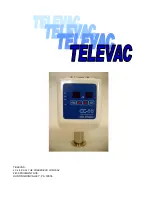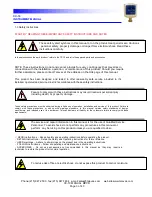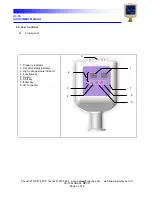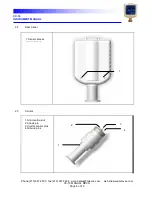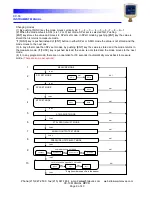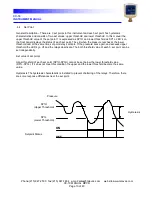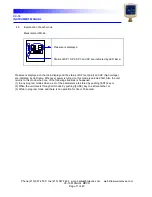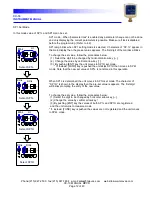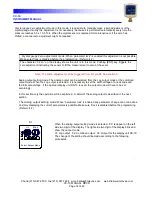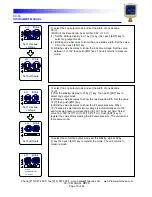
CC-10
INSTRUMENT MANUAL
Phone:(215) 947-2500 fax:(215) 947-7464 e-mail:[email protected] web site:www.televac.com
CC-10 MANUAL REV D
Page 2 of 40
Y
TELEVA
1.0
Introduction and Safety Instructions
1.0.1
Product Overview:
The CC-10 is a self-contained, compact wide range vacuum gauge and controller employing the latest sensor
technology. The CC-10 is able to replace multiple traditional gauges and provides the user with measurement
capability from atmospheric pressure to 10
-9
Torr. The gauge requires
22-26 VDC input power and provides the user with a digital pressure indication, analog output and RS485
digital communications. Three independent set points can be addressed from the instrum
ent‟s control panel,
from a tethered remote display module or via RS485.
1.2
Sensor Technology:
The CC-10 uses two sensor types to seamlessly measure a pressure range of 12 decades. An crystal sensor is
used to measure from atmospheric pressure to 10
-4
Torr and a double inverted magnetron cold cathode is used
to measure from 10
-2
to 10
-9
Torr.
1.2.1
Crystal Sensor Operating Principle
The crystal sensor is a simple tuning-folk shaped quartz oscillator th
at‟s similar to the oscillators commonly used in
wrist watches. The electrical impedance of the oscillation depends upon the pressure of the gas that surrounds
the quartz oscillator, because the resistance to the oscillation
(as caused by friction between the quartz surface and gas molecule), varies as the pressure changes. The
crystal sensor measures the electrical impedance of the quartz oscillator and its circuitry converts it to the
pressure value.
Crystal Sensor
1.2.2
Cold Cathode Operating Principle
The double inverted magnetron cold cathode sensor measures pressure by ionizing the residual gases in a
magnetron discharge. The body of the sensor serves as the cathode ands is at ground potential. The anode
operates at as much as 4000 volts. A permanent magnet traps electrons in the sensor to sustain the discharge at a
very low pressure. This type of sensor; like all ionization sensors, is sensitive to gas type, but unlike conventional
ionization gauges, has no filaments to burn out, can operate continuously at higher pressure and is considerably
more rugged and reliable.

